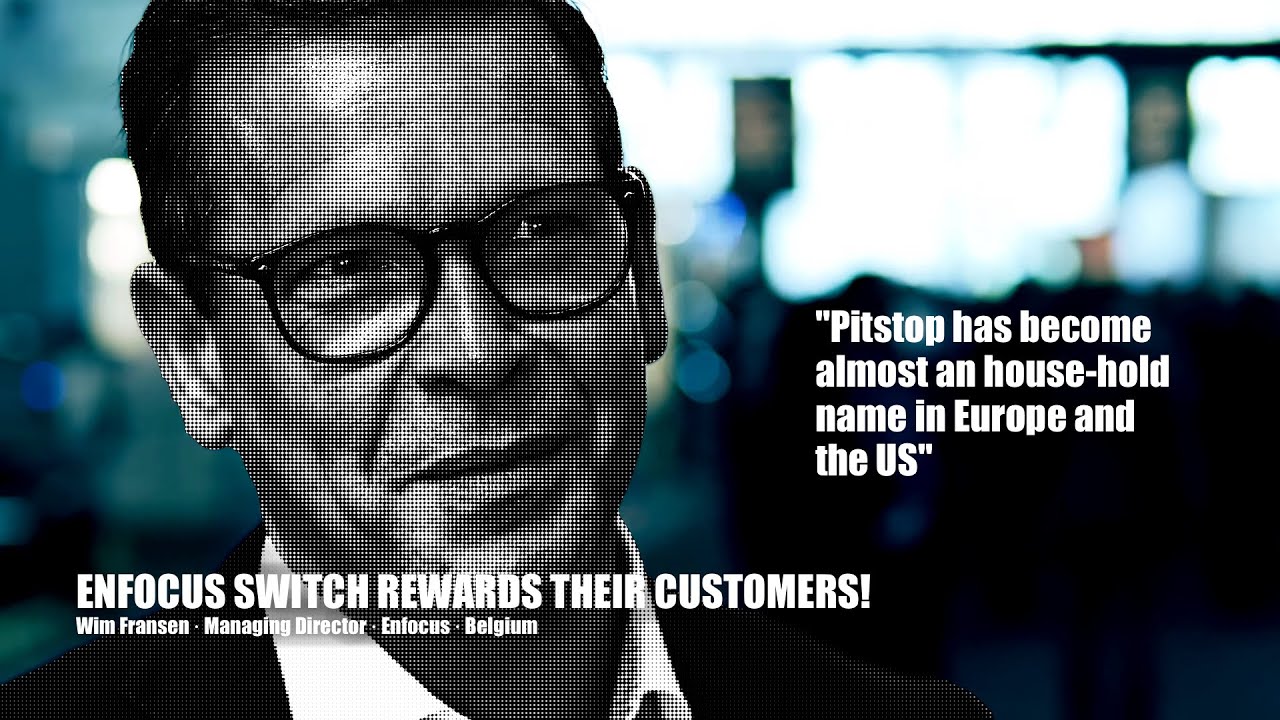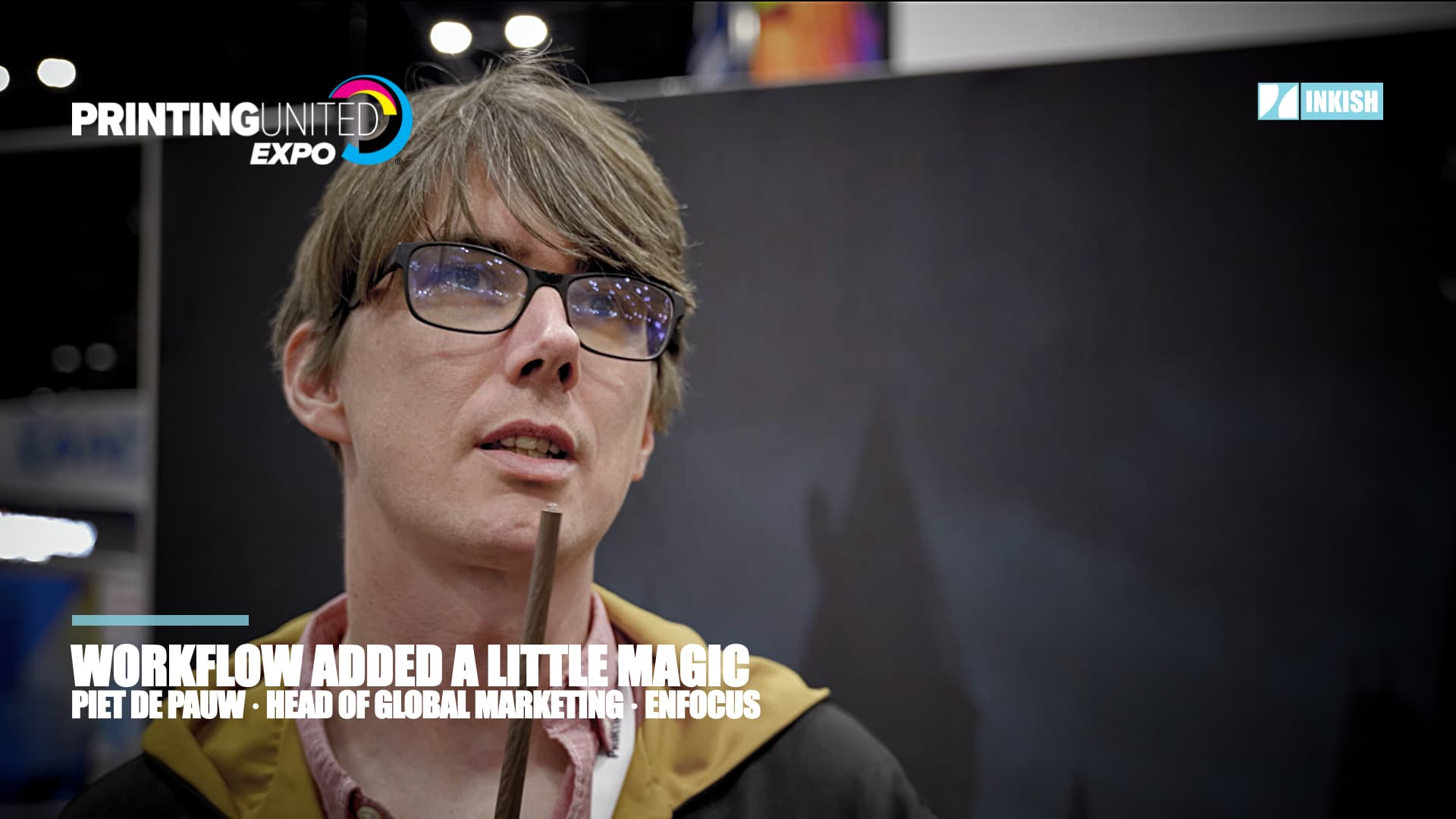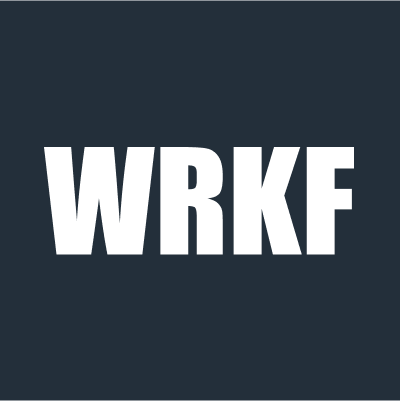Enfocus Switch Rewards Their Customers · Wim Fransen · Managing Director · Enfocus · Belgium
Enfocus is one of the maybe most known names in the printing industry. In this interview Managing Director, Wim Fransen goes as far as calling PitStop almost a house-hold name in Europe and the US. In this interview directly ask Wim Fransen whether their in-direct sales channel is the right one for software such as Enfocus Switch. Wim Fransen, who has been Managing Director for a couple of years, tell that this business model is such an important core of Enfocus that he almost compared as important as PitStop itself.
As usual watch, like, and share this film.
It is true. I would agree with that statement. Switch equals growth for our customers, the people that implement Switch, because automation is the only way to stay profitable and grow your business, take on new opportunities expand and diversify your business into different areas. Well, and of course, as a result of that, it’s also fueling the growth of Enfocus.
I’m happy to hear that you see it that way. It’s true. We still have some regions that are not so familiar with PitStop, but in other regions like Europe and the US, we are … it’s a household brand. It’s a well-respected product and I’m very happy that after more than 20 years since that originated in 1993 I believe it was, we still see extra seats and an increased growth, continued growth of that.
But that’s mainly to do with that we continue to innovate in the products but also innovate at the business model around it, which we’re now selling mainly subscriptions also of the software and have to kind of change the way we work, and work on customer success and helping the customer to get the most of the product, rather than having this one-off sale mentality. This is a change for us, but it’s working well.
Exactly. So this doesn’t come for free, and so we have yearly subscriptions, right? Or even monthly subscriptions for people that have peak periods and need an extra seats for a limited amount of time, but they expect from us in each release they expect to see improvements. They expect to see their issues change. You would say, “Aren’t those issues the same as they’ve ever been?” That’s not true. Several companies have been expanding and growing into other sectors. They may might be book printers before, but now they’re all of a sudden doing large format and that brings special needs and we have to build those checks and fixes and editing tools into the PitStop solution.
Good question, [Morten 00:02:27]. There is definitely competition, but we are seeing that with Switch we address different needs than your typical let’s say workflow solution or workflow system. What I mean by that is like a prepress workload system. Yes, Switch is very well-suited to implement an automated prepress workflow, but it has this unique ability to also connect different solutions, different tool sets, different pieces of hardware that already have.
I would call it like a middleware that connects all the different investments and all the islands of automation that are already out there at most customers. And I think that is a kind of unique position to be in and is what is … It’s not always an easy story to bring because yeah, if you’re connecting things, but are you really? Yeah? But that’s what we really are about, I think Enfocus is all about that.
Not only connecting technical things in hardware and software, but also connecting people and that’s why I’m also here today, to walk around, talk to our partners because many partners even here at the Label Expo are using our technology, our PitStop libraries inside their products, and then we have solution partners that are working with Switch and because …
For example, Tilia Labs has an automated solution for a layout in different areas, including labels, and they have a certain level of automation, but when it comes from, “How can we make that part of the business automation?” Linking that up to an MIS system that people might have invested in or e-commerce that many are invested in, there is that we work together to connect a variety of different vendors, kind of work on an ecosystem for partners.
Exactly there, because you know Switch is in itself quite generic and customizable system. It comes with things like scripting and APIs. However, not everybody is capable or has the time to write scripts or pay for script. So what we did is we opened up an app store.
And you’ve got games in there?
Yeah, there are not yet games in there, to my …
To your knowledge.
To my knowledge, yeah. Maybe there’s some Easter egg, but there are all sorts of small and larger applications that do something out of the box, connect Switch to FTP, work with the planning system, drive a certain piece of hardware, and that … I think that’s a smart move. Are we making revenue? Are we making money from the app store? No, not yet. It’s growing. It’s definitely growing in number of apps and number of users, but our ambition with it is to just make it easy for the customer to connect all the bits and pieces they need to connect, rather than doing that all through programming or complicated setups.
It can be different obstacles. There’s not a single answer to that, and I tend to see that it depends a bit on the size of the company. We are having a lot of success with Switch in like mid-sized, 2200 people … That’s already big, let’s say 20-to-50-people shops, printers providers because they have set aside usually an IT department or a workflow manager that has time to stop the clock and change the process, basically.
But we are not seeing the same thing at the smaller printers. They just have to produce and they are too busy to slow down, to say, “Hey, what would it take to change our way of working, to start automating?” And that’s the challenge that we see that is often combined also with the money challenge, even though Switch is an affordable solution. It’s not only Switch, it’s also the consultant. If you don’t have a person in-house that needs to hold your hand, plan the implementation, these people don’t do that for free, the system integration. And so, if you look at the total package, it’s still, yeah, relatively expensive to step into that. When you get the rewards, the rewards are big, but you get them later.
There are two ways that I believe we can help the industry or let’s say the smaller companies who are really struggling to get on this automation journey. There’s two ways that we can help them. One is to find some way of selling Switch in a recurring model, and we need to be smart about that. Every year-
Like the subscription model, or-
Like for example a subscription model or some type of rental model. In some regions we have early let’s say trials of that to see how that would work. And secondly, it’s also to scope the projects right. What I mean by that is find, together with the customer, one piece of the whole puzzle let’s say, of the whole business flow where the automation gives fast and immediate ROI, because that then is enough to pay back for the Switch and then to grow from there.
Often, customers want to boil the ocean and they see at a show like Label Expo all the possibilities and they say, “We need this, and we need this rapidly, all at once,” but then the project becomes too big, then they are confronted with the whole cost of doing that. Yes, it’s possible but it will take two years and it will cost you a lot, and so we try to help the customer to identify the high-value pieces in that, and start from there, and then that tends to work.
Of course, when I just joined Enfocus I had that same question because I didn’t really … I come from ESCO originally, where we have a direct sales model, so I didn’t really understand immediately the value of the indirect model. Now that I’m into it, I would say the success of Enfocus is really 100% dependent on that channel, no doubt about it. The reason is because we are a far-too-small company to service all those customers. It’s not only about selling, it’s also about servicing the customers, advising them, bringing the knowledge in their language, in terms they understand.
It is just not an option, and we’ve built that up as an asset of Enfocus, that we’ve build up over like 20 years. I would say that’s, next to our PDF technologies, which is pretty cool. The power of the indirect model in the channel and the friends we have in that channel, the loyalty there is in that, I would say that is the … That is our business.










































































